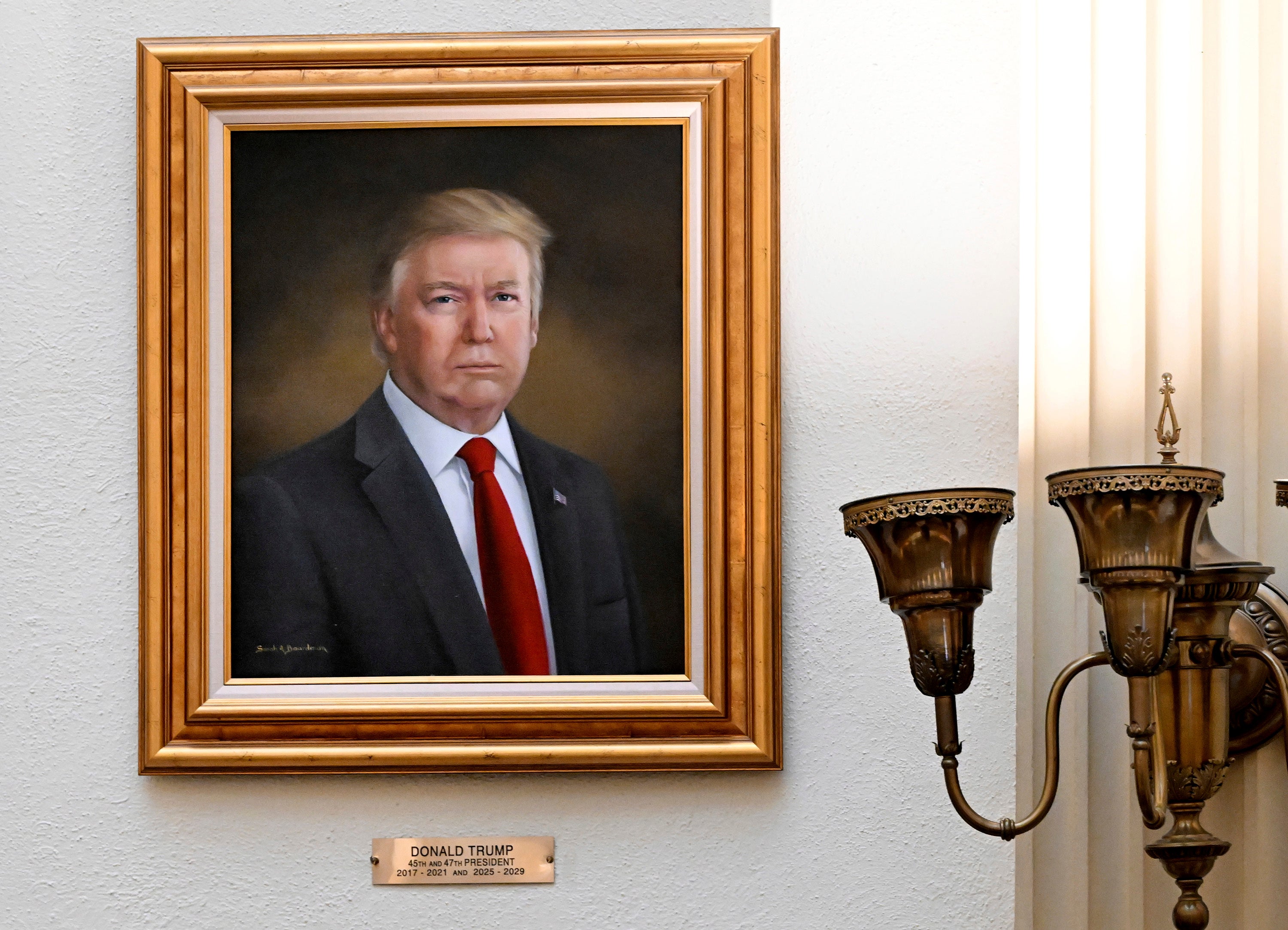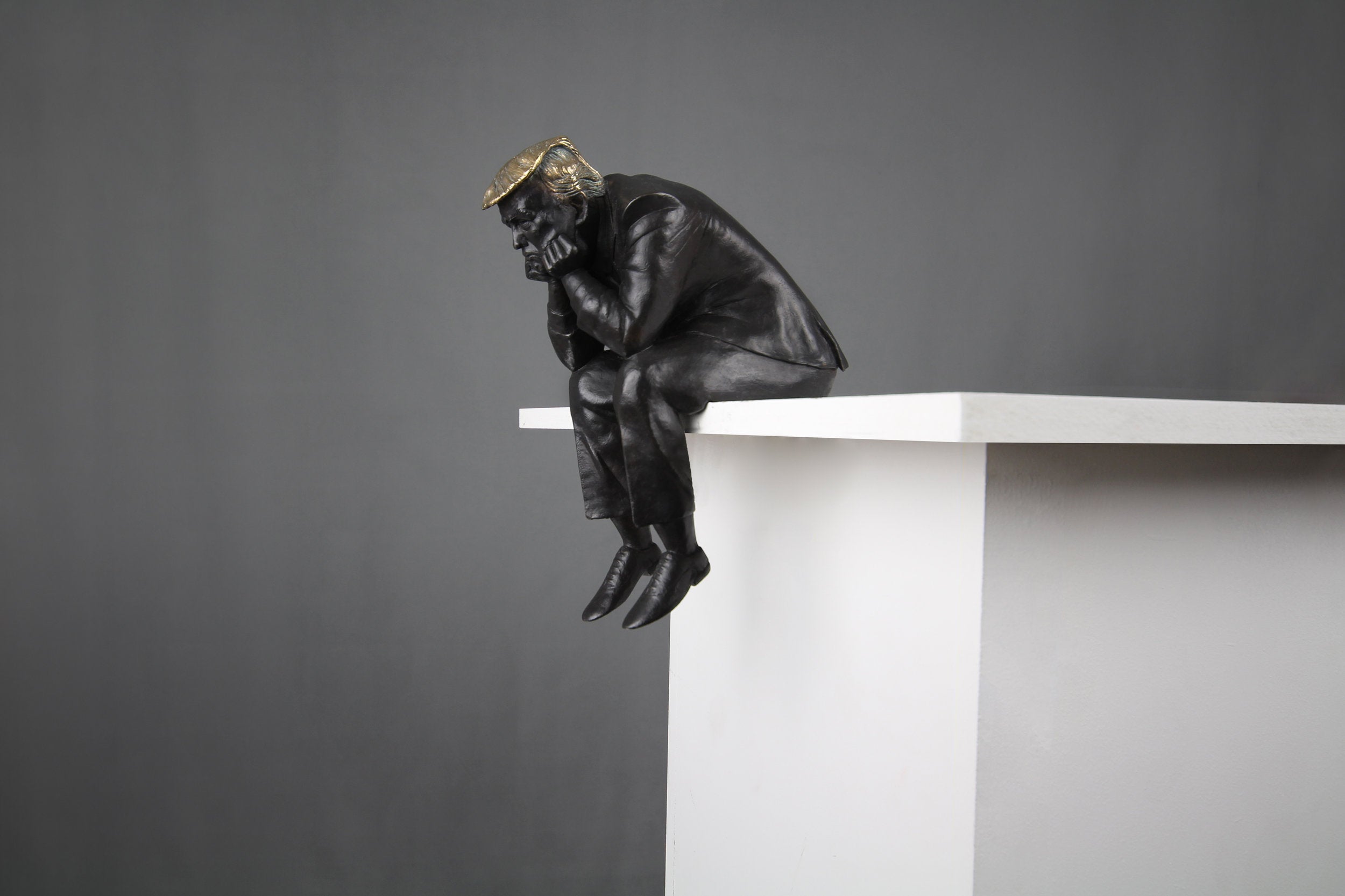There’s a reason why Trump hates his portrait – and it’s nothing to do with the artist
Donald Trump has had a 2019 portrait removed after raging about how it portrays him as ‘truly the worst’ compared to President Obama. Yet nobody, sitter or artist, can control the outcome, writes the sculptor Lizzie Cane, who crafted a similarly controversial artwork of the US president in 2019


You can’t control how someone else sees you – however much Donald Trump may wish it. Art is necessarily subjective, which is perhaps how a portrait of the president by the British-born artist Sarah Boardman, intended to sit as a neutral addition to a presidential portfolio, is seen by its subject as “the worst” and “purposefully distorted”.
The portrait has quietly hung in the Colorado state capitol building since 2019 alongside those of other past presidents. It is unclear what led Trump to notice it now, but he compared it unfavourably – and loudly – to Boardman’s previous portrait of Barack Obama and suggested that she was deteriorating as an artist (although at 63, she is 15 years younger than Trump). He has blamed Boardman and Democratic governor Jared Polis – the painting was, in fact, commissioned by a group of Republicans through a GoFundMe – and successfully demanded that the painting be removed.
When I created my sculpture of the president, also in 2019 (The Greatest Sculpture in the History of Sculptures), it wasn’t intended as a political piece either. That might sound odd given his office, but my aim was rather to explore the human condition through the image of one of the world’s most famous people. Trump is a fascinating figure in that no matter what he or his administration does, he shirks responsibility. There’s no humility, never any sign of remorse – much less an apology – so I imagined that if we were to actually witness him exhibiting vulnerability, it would be behind closed doors, slumped over like a petulant child.
Typically, memorial sculptures are elevated on huge plinths, the bronze cementing the importance of the person we are made to look up to, and this is why I made my Trump. It’s an anti-memorial piece where I’ve not afforded him centre stage as he perches on the edge, diminished. I’m representing how I see him as a human, throwing his toys out of the pram like a toddler. And that is relevant now, and quite frankly hilarious, because that’s exactly what he’s doing with Boardman’s painting.

The difference between our works is that my sculpture was never necessarily meant to be seen by Trump; I never assumed it would be. So in that, we already take away the need to impress or to feel that it needs to connect with him as a person. It represents a feeling that others have about him that Trump would never really know because he is not interested in listening to anything negative about himself. Certainly, even if confronted with it, he wouldn’t even believe it. That’s why I believe he’s freaking out about Boardman’s painting. He’s realised that he doesn’t get to control something as simple as how he looks, and it’s quite alarming to him, so I wonder if this may lead him to question the other ways he presents himself to the world.
That Trump has had the painting taken down from display mirrors where we are in our culture now with social media. We attempt to have complete control over our image online. We ask people to take down photos that we don’t like. We apply filters, choose from a million selfies and edit our appearance to curate how we are seen by others. This painting is an analogue version of that: Trump seemingly views himself as more beautiful than this portrait. But it does look like him, and even though it is, in theory, just about his appearance, his reaction cements what he’s like as a human being. He will not face reality, and he’s not in touch with it.

I don’t think anyone has a say in how a portrait is received. Ultimately, it’s in the eye of the beholder. Madame Tussauds’s hugely accomplished wax works are one example of how divisive portraiture can be. Many celebrities sit for them in person, and the process involves hundreds of measurements. Some visitors will say they are brilliant likenesses, whereas others respond that the same waxwork is terrible. Some people feel they’re in the presence of the rich and famous, some people get creeped out, and some find the replicas soulless. I feel that with portrait sculpture, it’s easy to glorify the subject by manipulating size, materials and location. With painting, however, if you’re commissioned to capture a likeness, there’s not much masking you can do before it starts getting lost.
What started as a traditionally styled oil painting has evolved into YBA-esque performance art where Trump himself is painting a picture of who he really is. It’s the conversation around it that is now bringing attention to it, which is genius – if unintentional. In that respect, it’s a raging success for the artist.
You can't pull the wool over people’s eyes – nor can you please everyone. But how wonderfully ironic that in his attempt to prevent the painting from being seen, Trump has, in fact, thrust it straight into the limelight.
Lizzie Cane’s work looks at the human condition and how, knowingly or not, we physically bare our soul through body language and behaviour. From the figurative to the abstract, across all mediums, she aims to coax the viewer into reflecting on their own emotional experiences
Join our commenting forum
Join thought-provoking conversations, follow other Independent readers and see their replies
Comments
Bookmark popover
Removed from bookmarks